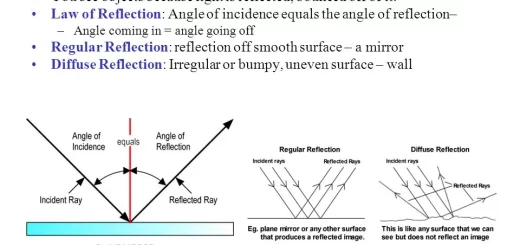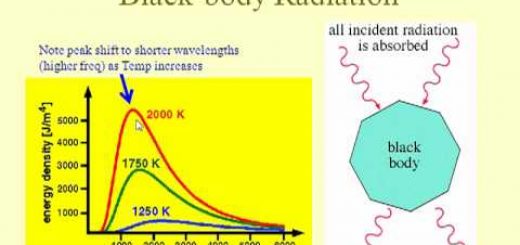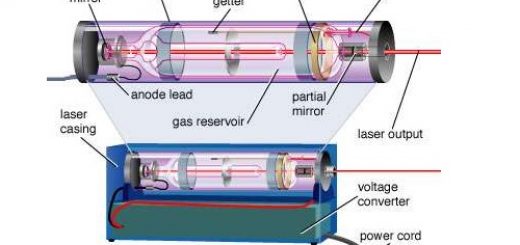Magnetic effect of the electric current and Magnetic flux density due to current in two parallel wires
In 1819, a Danish physicist (Hans Oersted) brought a small compass near a wire carrying an electric current and parallel to it, He noticed that the compass needle deflected and when he turned the current off, the compass returned back to its original position , He concluded that when an electric current passes through the wire, a magnetic field is generated around the wire which is called the magnetic effect of the electric current.
The magnetic flux
The magnetic field intensity at a point is expressed in terms of magnetic flux density (B), The magnetic flux (φm) can be determined from the relation:
φm = BA sin θ
Where: θ → is the angle between the magnetic flux lines and the area.
The magnetic flux intensity (B) at a point: number of magnetic flux lines that pass perpendicular to a unit area, surrounding that point.
If the magnetic flux lines are parallel to the area, θ = zero, so, φm = BA sin 0 = 0.
If the magnetic flux lines are perpendicular to the area, θ = 90°, so, φm = BA sin 90 = BA.
The measuring unit of the magnetic flux (φm) is Weber while the measuring unit of the magnetic flux density is Weber/m² which is equivalent to Tesla.
If the coil rotates with angle θ from the normal position: φm = BA sin (90 − θ).
If the coil rotates with angle θ from the parallel position: φm = BA sin θ.
Magnetic field due to current in a straight wire
The shape of the magnetic flux lines
To identify the shape of the magnetic flux lines, we carry the following steps:
- Spread iron filings on a paper surrounding a wire carrying an electric current in a vertical position and gently tap it, Observation: The iron filings become aligned in concentric circles around the wire and they are closer together near the wire & far away from each other as the distance from the center of the wire increases.
- As the electric current increases and by taping the board, Observation: The flux lines become more crowded & closer together around the wire.
Conclusion:
- The circles represent the magnetic flux lines.
- The magnetic flux lines are crowded near the center of the wire which means that the magnetic field intensity increases by decreasing the distance from the axis of the coil & decreases by increasing the distance, So, the magnetic flux density is inversely proportional to the distance from the wire (B ∝ 1/d).
- As the electric current intensity passing through a wire increases, the magnetic field intensity increases and vice versa such that (B ∝ I), So, The magnetic flux density is directly proportional to the electric current intensity (B ∝ I).
Ampere’s right-hand rule
Uses: It is used to determine the direction of magnetic flux lines resulting from electric current in a straight wire.
Method: You grasp the wire with your right hand such that the thumb points to the direction of the current while the rest of the fingers around the wire give the direction of the magnetic field.
Deduction of the magnetic flux density
The magnetic flux density at any point at a distance (d) from a wire carrying electric current (I) can be deduced as follows:
B ∝ I, B ∝ 1/d ∴ B ∝ I/d
∴ B = constant × I/d
B = μ I / 2πd
The relation is called (Ampere’s circuited law), where: μ is the permeability of the medium and its measuring unit is Tesla.meter/Ampere (T.m/A) which is equivalent to Weber/Ampere.meter (Wb/A.m).
The permeability of air = 4 π × 10−7 Wb/A.m
The permeability of the medium (μ) is the ability of the medium to allow the magnetic flux to pass through it.
Bair = 4 π × 10−7 I / 2 π d
Bair = 2 ×10−7 I / d
Factors affecting the magnetic flux density in a straight wire
- The permeability of the medium (μ) is constant for each medium (directly proportional).
- The electric current intensity (I) is directly proportional.
- The distance between the point and the wire (d) is inversely proportional.
High voltage towers should be placed away from buildings to reduce the harmful effect of the magnetic field on health as the magnetic flux density is inversely proportional to the distance, (B ∝ 1 /d).
The magnetic flux density due to current in two parallel wires
In the same direction
If the current is in two wires in the same direction, The direction of the magnetic field lines between the two wires in the opposite direction, So, the magnetic flux density at a point between two wires.
Bt = B1 − B2 (B1 > B2)
The direction of magnetic field lines outside the two wires is in the same direction, So, the magnetic flux density at a point outside the two wires.
Bt = B1 + B2
The resultant of the magnetic flux density outside of the two wires is greater than the resultant of the two magnetic flux densities between them.
So, a magnetic attraction force is produced which moves the two wires from the high-density region (outside) to the low-density region (inside).
At a certain point called the neutral point between the two wires.
B1 = B2
So, Bt = B1 − B2 = 0
So, the neutral point is the point where the magnetic flux equals zero, we can determine the neutral point.
B1 = B2
μ I1 / 2π ( x − d ) = μ I2 / 2 π d
I1 / ( x − d ) = I2 / d
(Where: d is the distance of the neutral point from the wire of the less electric current)
In the opposite direction
If the current in two wires in the opposite direction, The direction of magnetic field lines between the two wires in the same direction, So, the magnetic flux density at a point between two wires.
Bt = B1 + B2
The direction of magnetic field lines outside the two wires is in the opposite direction, So, the magnetic flux density at a point outside the two wires.
Bt = B1 − B2 , B1 > B2
The resultant of the magnetic flux density between the two wires is greater than the resultant of the two magnetic flux densities outside them.
So, a magnetic repulsion force is produced from the high-density region (inside) to the low-density region (outside).
At a certain point called the neutral point outside of the two wires.
B1 = B2
So, Bt = B1 − B2 = 0
So, the neutral point is the point where the magnetic flux equals zero, we can determine the neutral point.
B1 = B2
μ I1 / 2π ( x + d ) = μ I2 / 2 π d
I1 / ( x + d ) = I2 / d
(Where: d is the distance of the neutral point from the wire of the less electric current)
The neutral point for two parallel wires carrying electric current in the same direction lies between the two wires, Due to the formation of two opposite magnetic fields at any point between the two wires, where the neutral point is formed when the effects of the two fields cancel each other.
The neutral point for two parallel wires carrying electric currents in opposite directions lies outside the two wires, Due to the formation of two opposite magnetic fields at any point outside the two wires, where the neutral point is formed when the effects of the two fields cancel each other.
When two different currents pass in two wires, the neutral point lies always close to the wire carrying the less current, The neutral point is formed at the mid-distance between the two wires, When the two wires carry the same current in the same direction, The neutral point for two wires carrying electric currents is not formed, When the two wires carry the same current but in opposite directions.
The magnetic field due to current in a circular loop and a solenoid
Magnetic force & Torque, Factors that affect the torque & magnetic dipole moment



